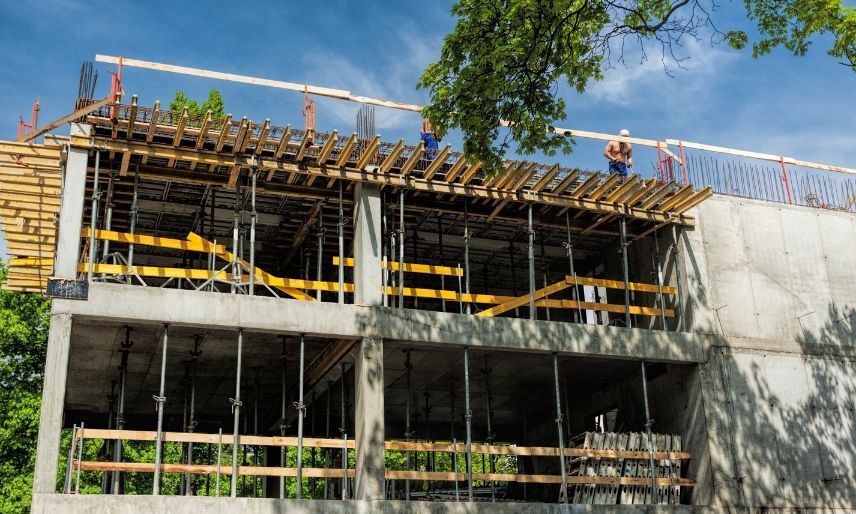Choosing the lowest bid for public construction projects might seem like a smart way to save taxpayer money upfront. However, this approach often leads to hidden costs, delays, and compromised safety that far outweigh initial savings. Research shows that more than half of low-bid projects exceed their budgets, and nearly half miss critical deadlines. This pattern raises a crucial question: is the “lowest bid wins” mentality actually hurting the quality and success of public projects?
Understanding the pitfalls of low-bid procurement sheds light on why prioritizing value, quality, and service can lead to better outcomes for communities and governments alike. This article explores the real costs behind the lowest bids and why shifting the focus can protect public investments.
How Low Bids Lead to Cost Overruns and Delays
At first glance, awarding contracts to the lowest bidder appears to be the most economical decision. Yet, industry data paints a different picture. A 2024 report found that 57% of low-bid projects exceed their original budgets, while 46% fail to meet deadlines. These overruns often stem from underestimated costs and unforeseen complications that arise when contractors cut corners to stay competitive on price.
One expert insight captures this well: “In practice, cheap bids often lead to expensive problems... What seemed like the lowest price ends up ballooning the budget.” This phenomenon is not just anecdotal but supported by systematic research. A study analyzing 258 transportation infrastructure projects revealed that cost underestimation is frequently a result of strategic misrepresentation, where bids are intentionally low to win contracts but do not reflect true project costs.
Such underbidding places contractors in a difficult position. To meet contractual obligations within a tight budget, they may reduce quality, delay work, or cut corners on safety and materials. This inevitably triggers rework and defects, which industry studies estimate can add up to 30% of total project costs. The initial savings vanish, replaced by higher expenses and extended timelines.
Moreover, the impact of low bids extends beyond immediate financial implications. Stakeholders, including clients and end-users, often face the brunt of these issues. For instance, infrastructure projects that fall behind schedule can lead to increased traffic congestion, safety hazards, and a general decline in public trust towards the contracting entities. This erosion of confidence can have long-term repercussions, affecting future projects and funding opportunities. Additionally, the pressure to deliver on a low bid may lead to a workforce that is overworked and under-resourced, further compromising project integrity and worker safety.
For those interested in the detailed industry perspective, Messerly Concrete’s report offers an in-depth look at why execution-focused contracting beats low-bid cycles in construction. The report emphasizes the importance of value engineering and collaborative planning, which can mitigate risks and foster a more sustainable approach to project delivery, ultimately benefiting all parties involved.
The Hidden Risks Behind the Lowest Bid
Beyond budget and schedule issues, low bids often carry hidden risks that jeopardize project quality and safety. One significant concern is the impact on subcontractor safety management. Research shows that winning a contract through a low-price bid can weaken general subcontracting safety oversight, indirectly increasing unsafe behavior intentions among on-site workers. This creates a dangerous environment that can lead to accidents, injuries, and costly liabilities.
Moreover, low bids tend to attract contractors who may lack the necessary experience, resources, or commitment to quality. The pressure to deliver within a constrained budget often results in substandard workmanship and materials. Over time, these deficiencies manifest as defects requiring costly rework, further delaying project completion and increasing expenses.
Experts emphasize that “the low bid does not always mean low cost, and often comes with hidden risks and long-term complications that outweigh the initial savings.” This insight highlights the importance of evaluating bids beyond price alone, considering the contractor’s track record, quality standards, and safety protocols.
For readers seeking a deeper understanding of these risks, the study on construction worker safety provides valuable evidence linking low-price bids to compromised safety management.
In addition to safety concerns, low bids can also lead to a lack of accountability among contractors. When a contractor is selected primarily based on price, there is often less incentive for them to adhere to project specifications or timelines. This can result in a culture where corners are cut, and compliance with regulations is overlooked, further exacerbating the risks associated with low-bid projects. The implications of this can extend beyond immediate project outcomes, potentially damaging relationships with clients and stakeholders who expect a certain standard of quality and reliability.
Furthermore, the ripple effects of choosing the lowest bid can impact the entire supply chain. Suppliers and subcontractors may also feel the pressure to reduce their prices to compete, which can lead to a cascading effect of reduced quality across the board. As these suppliers cut costs, they may provide inferior materials or services, which can compromise the integrity of the entire project. This interconnectedness of the construction ecosystem underscores the need for a more holistic approach to bidding that prioritizes quality and safety alongside cost.
Why Quality and Service Matter More Than Price
While cost is an important factor in public projects, quality and service often have a greater impact on overall success. A survey of construction owners and developers found that 95% consider quality and service crucial when selecting contractors, and 89% are willing to pay more for these attributes. This willingness reflects an understanding that investing in quality upfront reduces risks, rework, and delays down the line.
Quality-focused contractors prioritize thorough planning, skilled labor, and durable materials. They maintain open communication and responsive service throughout the project lifecycle. These factors contribute to smoother execution, fewer surprises, and better alignment with project goals. Furthermore, a commitment to quality often fosters a culture of accountability among team members, as everyone understands their role in delivering a successful outcome. This collective responsibility not only enhances the work environment but also leads to higher morale and greater job satisfaction, which can translate into improved performance on the job site.
Choosing quality over the lowest bid also supports long-term value for public infrastructure. Well-built projects require less maintenance, perform better, and serve communities effectively for years. This approach aligns with responsible stewardship of public funds, ensuring that investments deliver lasting benefits rather than short-term savings followed by costly fixes. Additionally, quality projects can enhance the reputation of the contractors involved, leading to more opportunities and partnerships in the future. Communities benefit not only from functional infrastructure but also from the pride that comes with well-executed projects that stand the test of time, fostering a sense of ownership and investment among residents.
For more on why quality and service trump low bids, see the industry report on construction business coaching.
Strategic Procurement: Moving Beyond the Lowest Bid
Recognizing the limitations of the lowest bid approach, many public agencies are exploring alternative procurement methods that emphasize value and execution. These strategies include best-value contracting, qualifications-based selection, and performance-based incentives. The goal is to balance cost with quality, safety, and timely delivery.
By focusing on contractors’ experience, past performance, and ability to manage risks, agencies can select partners who are more likely to deliver successful projects. This shift reduces the temptation for contractors to underbid unrealistically and encourages transparency and accountability.
Adopting a value-based approach also aligns with findings from bidding competitiveness studies. For example, an analysis of public construction projects in Jordan showed that success rates improve when contractors are evaluated on multiple criteria beyond price. This comprehensive evaluation fosters healthier competition and better project outcomes.
Moreover, value-based procurement encourages innovation within the contractor community. When contractors are not solely competing on price, they are more likely to propose creative solutions and technologies that can enhance project efficiency and effectiveness. This can lead to the adoption of sustainable practices, such as using eco-friendly materials or implementing energy-efficient systems, which ultimately benefit both the environment and the community.
Additionally, the shift towards value-based procurement can strengthen relationships between public agencies and contractors. By fostering a collaborative environment, both parties can engage in open dialogue about project expectations, risks, and performance metrics. This partnership approach not only helps in achieving project goals but also builds trust and accountability, which are essential for long-term success in public procurement.
For those interested in procurement innovation, the Advastar Group’s blog discusses why the lowest bid can be the most expensive mistake and how value-based procurement offers a smarter path forward.
What Public Agencies Can Do to Protect Project Quality
Public agencies have a critical role in reversing the damaging effects of the “lowest bid wins” mindset. Several practical steps can help safeguard quality and ensure responsible use of public funds:
- Implement Best-Value Procurement: Incorporate criteria such as contractor qualifications, past performance, safety records, and project approach alongside price.
- Require Detailed Cost Estimates: Demand transparent, realistic budgets that reflect true project scope and risks to avoid strategic underbidding.
- Enforce Quality Standards: Set clear quality benchmarks and conduct regular inspections to prevent defects and costly rework.
- Prioritize Safety Management: Include safety performance as a factor in contractor evaluation and monitor site conditions closely.
- Promote Collaboration: Encourage open communication between agencies, contractors, and subcontractors to address issues proactively.
Taking these steps helps create an environment where contractors are rewarded for delivering quality work on time and within budget, rather than simply offering the lowest price. This approach ultimately benefits taxpayers and communities by producing safer, more durable public infrastructure. Furthermore, fostering a culture of quality not only enhances the performance of individual projects but also builds a reputation for excellence within the public sector. When agencies prioritize quality, they set a standard that encourages contractors to invest in their own capabilities, leading to a more skilled workforce and innovative practices across the industry.
Moreover, public agencies can also engage in continuous training and development programs for their staff, ensuring that they are equipped with the latest knowledge and tools to evaluate project proposals effectively. By investing in professional development, agencies can enhance their ability to assess contractor qualifications and project plans critically. This proactive approach not only mitigates risks associated with poor-quality work but also fosters a more competitive environment where quality is recognized and rewarded, ultimately leading to improved outcomes for public projects.
Before You Go: Key Takeaways on Low-Bid Procurement
Choosing the lowest bid may seem like a straightforward way to save money on public projects, but the reality is far more complex. Cost overruns, delays, safety risks, and poor quality often accompany low bids, turning initial savings into long-term expenses. Studies show that a majority of low-bid projects exceed budgets and miss deadlines, while construction defects can add up to 30% of project costs.
Quality and service are critical factors that most owners value highly, with many willing to pay extra for contractors who deliver on these fronts. Moving beyond the lowest bid to embrace value-based procurement models can improve project outcomes and protect public investments.
Ultimately, public agencies must rethink procurement strategies to prioritize execution, safety, and quality. This shift not only reduces risks but also builds infrastructure that stands the test of time.
Moreover, the implications of low-bid procurement extend beyond immediate project concerns. When a contractor is selected based solely on cost, there is often little incentive for them to invest in the quality of materials or skilled labor, which can lead to subpar results. This not only affects the integrity of the project but can also harm the reputation of the agency involved, potentially leading to public distrust and skepticism regarding future projects. In contrast, a focus on quality and value encourages contractors to innovate and utilize best practices, resulting in more sustainable and efficient outcomes.
Additionally, the long-term economic impact of choosing quality over the lowest bid can be significant. Projects that are completed on time and within budget tend to foster positive relationships among stakeholders, from contractors to community members. This collaborative environment can lead to more successful future projects, as trust is built and maintained. Furthermore, investing in quality can reduce the need for costly repairs and maintenance down the line, ultimately saving taxpayer dollars and ensuring that public infrastructure serves its intended purpose effectively for years to come.
Frequently Asked Questions
Q: Why do low bids often lead to higher overall costs?
A: Low bids may underestimate true project costs, causing contractors to cut corners or face delays that increase expenses through rework and defects. This phenomenon often stems from a competitive bidding environment where contractors feel pressured to submit the lowest possible bid to secure the project. As a result, they may overlook critical elements such as labor quality, material specifications, and project timelines. When these aspects are compromised, it can lead to a cascade of issues, including project overruns, increased material waste, and the need for additional resources to rectify mistakes, ultimately inflating the total cost beyond the initial bid.
Q: How does low-bid procurement affect construction safety?
A: It can weaken subcontractor safety management, increasing unsafe behaviors and accident risks on job sites. When contractors operate under tight budgets due to low bids, they may prioritize cost savings over safety measures. This can manifest in inadequate training for workers, insufficient safety equipment, and a lack of thorough safety protocols. The pressure to complete projects quickly can lead to shortcuts that compromise worker safety, resulting in higher rates of accidents and injuries. Furthermore, a culture that undervalues safety can permeate the entire project, affecting not only the workers directly involved but also the surrounding community and stakeholders.
Q: What alternatives exist to the “lowest bid wins” approach?
A: Best-value contracting and qualifications-based selection evaluate contractors on quality, experience, and safety alongside price. These approaches encourage a more holistic evaluation of potential contractors, allowing agencies to consider factors such as past performance, technical expertise, and the ability to meet safety standards. By prioritizing these elements, agencies can foster a more collaborative environment where contractors are incentivized to deliver high-quality work rather than merely focusing on cutting costs. Additionally, implementing performance-based contracts can further align the interests of both parties, ensuring that quality and safety are integral to the project's success.
Q: Are public agencies willing to pay more for quality?
A: Yes, surveys show that nearly 90% of owners would pay extra for better quality and service. This willingness reflects a growing recognition that investing in quality upfront can lead to significant long-term savings and benefits. Quality construction often results in fewer maintenance issues, lower lifecycle costs, and enhanced durability of the infrastructure. Moreover, when agencies prioritize quality, they can build trust and improve relationships with contractors, leading to better communication and collaboration throughout the project lifecycle. This shift in mindset can ultimately contribute to more successful project outcomes and greater public satisfaction.
Q: What role does strategic misrepresentation play in cost underestimation?
A: Contractors may intentionally submit low bids to win contracts, knowing the real costs are higher, leading to misleading estimates. This practice can create a competitive disadvantage for honest contractors who provide accurate estimates based on realistic assessments. Strategic misrepresentation not only undermines the integrity of the bidding process but can also lead to significant legal and financial repercussions for the contractor if they fail to deliver on their promises. Furthermore, such tactics can erode trust among stakeholders, as agencies may become wary of future bids, fearing that they will encounter similar deceptive practices.
Q: How can agencies ensure contractors deliver quality work?
A: By setting clear quality standards, requiring detailed cost estimates, monitoring safety, and fostering collaboration throughout the project. Agencies can implement rigorous pre-qualification processes to assess contractors' capabilities and past performance. Regular site inspections and progress meetings can help maintain accountability and ensure that quality benchmarks are met. Additionally, establishing a feedback loop where contractors can share insights and challenges can enhance collaboration and innovation, ultimately leading to improved project outcomes. By prioritizing quality and safety from the outset, agencies can create a culture of excellence that benefits all stakeholders involved.




